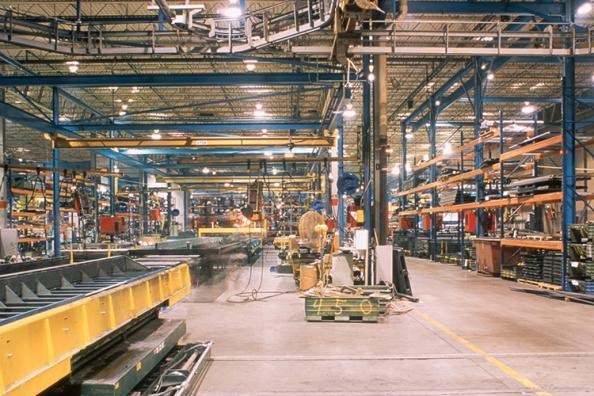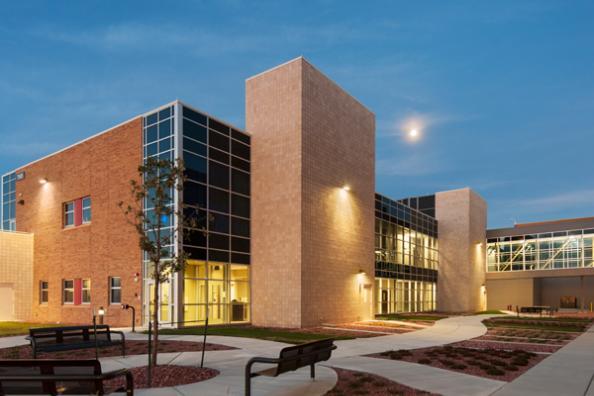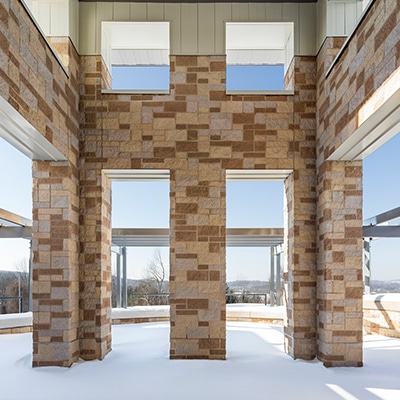Getting the best facility for your investment; it’s every owner’s goal. And it’s one we know well. To get the most value from your project, you’ll need design, material and construction solutions that add value to your facility, improve the delivery of your project and support your business needs. Each project decision must take into account all the unique goals you have for your facility. For many owners, that ranges from supporting specific business functions and improving a facility’s value to ensuring a facility remains useful and holds that value for as long as possible. These goals must be balanced with meeting project budget and schedule, so you can be operational as quickly as possible and reduce both opportunity costs and real project costs. Some owners need to maintain the maximum operability of an active facility throughout construction, possibly using strategic project phasing. And others require a facility that can accommodate future expansions.
So how can you achieve all these goals?
The only way to truly achieve a best-value project while fully meeting all of your needs is to identify and prioritize these goals and evaluate solutions. The best place to start is by consulting a seasoned, expert project team that will work in open communication with you to deliver constructable solutions that match your objectives. One tool that provides a comprehensive analysis of a facility’s value is the life cycle cost analysis (LCCA).

What is life cycle cost analysis in construction?
Life cycle cost analysis is the formal process of calculating the ROI you can expect from a particular investment in your facility, taking into account all factors of cost and payoff. The LCCA provides long-term cost projections for a particular building investment over its useful life cycle, not just up front costs.
The investment itself can be anything from a building enclosure system to a roofing system or an energy-efficiency solution, such as premium lighting, solar photovoltaic (PV) panels, HVAC systems, insulation or other investments.
The LCCA is ultimately a tool for putting solid numbers behind your decision making. With it, you can evaluate where you should best spend your project dollars.
In the LCCA, the costs of two or more alternative designs are calculated and compared to determine which has the lowest long-term cost and better long-term value — e.g. which is most economical over the life of your facility.
What an LCCA entails
Over the long term, your facility’s operational costs and energy costs can actually outweigh even the initial cost of your project. That’s why some construction investments can pay off over time even though they might cost more up front. The LCCA allows you to weigh long-term costs against the costs of an up-front investment to see if it ultimately pays off.
The National Institute of Standards and Technology’s (NIST) Building Life Cycle Cost (BLCC) program provides owners several key measures to determine the value of an investment, including:
- Energy Escalation Rate Calculator
- Handbook 135 and the Annual Supplement to Handbook 135
- NIST’s Life Cycle Costing Manual
- BLCC5
The Energy Escalation Rate Calculator, based on energy price projections from the Energy Information Administration (EIA), helps project energy costs for your facility. With it, you can calculate the cost impact of energy savings, though we highly recommend digging deeper into the real energy costs of your particular area to get the most accurate picture of energy costs and savings.
The BLCC5 is used to evaluate alternative designs that have higher initial costs but lower operating costs over the project life than the lowest-initial-cost design. It’s particularly useful for determining the costs and benefits of renewable projects and energy and water conservation efforts. BLCC helps you calculate comparative cost measures for alternative designs, including net savings, savings-to-investment ratio, adjusted internal rate of return, and years to payback.
An integral part of the life cycle cost analysis is the use of operations and maintenance benchmarking, which gives you a frame of reference for comparing different investments. Benchmarks are based on the market costs of materials and man-hours, plus the performance of similar facilities — or your existing facility if you’re upgrading it. You can measure potential savings against a baseline when you substitute different construction solutions and building technologies, designs, materials and systems.
Some investments that cost more up-front may pay off in different ways. Some may reduce energy or operating costs, while others, such as Tilt-Up concrete wall systems, may significantly reduce your construction schedule, in turn reducing opportunity costs and real project costs. For some renewable energy systems, the payoff can come in the form of state or utility rebates or grants. Other times, complementary non-renewable systems may be downsized, offering savings in other forms.

How to maximize the value of your LCCA
Integrate a formal life cycle cost analysis into your project from the start. The best opportunity to capture savings and value from your project is before decisions have been made — before your project is locked into a set course. By having a multi-disciplined team of estimators, designers, construction professionals, sustainability experts and specialty contractors advise you early on, you’ll be assured of identifying and implementing the best-value solutions for your project. For this reason, we recommend using the Design-Build process.
Treat life cycle cost analysis as an ongoing process to revisit through all phases of the construction process. As your design develops from early concepts to robust models and final drawings, a multi-disciplined team should continuously reassess it to ensure its accuracy and help you get the best possible value. It’s key not to reject investments based on early life cycle cost analysis, but rather use the LCCA to inform the ongoing process. Your team can’t fully determine the details of resource availability, design, and savings without conducting detailed analysis in the later stages of design.
Selecting the right partner for the job
Life cycle cost analysis is crucial to a successful project, but it’s just one of just many things an owner needs to think through. We’ve published a guide, specifically for owners, that explains the important groundwork that must be done before beginning a project. Fill out the form below to download the guide.
